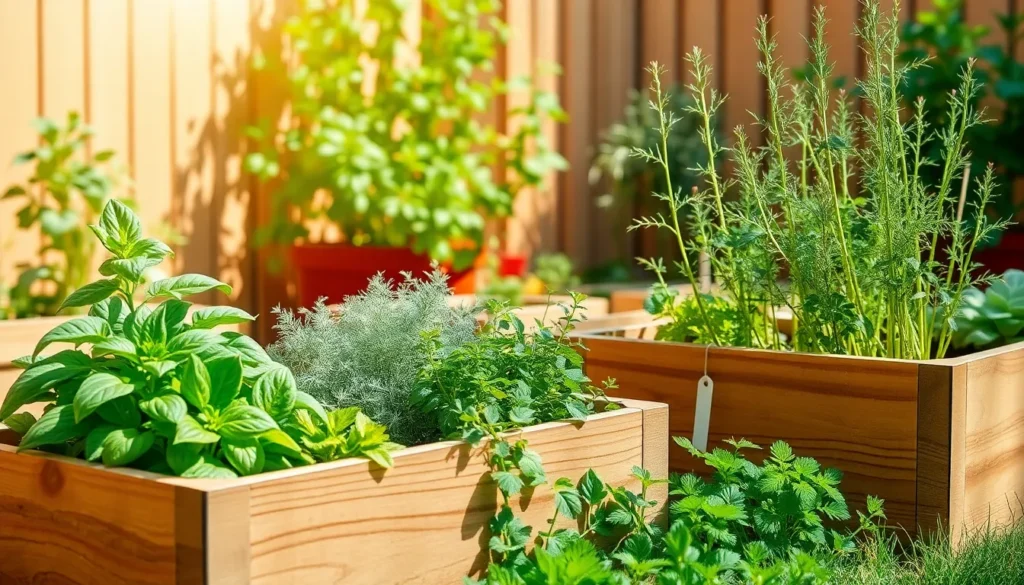Imagine stepping outside your door and being greeted by the fragrant embrace of basil, rosemary, and mint. Building a simple herb garden is like crafting your own personal oasis, where culinary inspiration and natural beauty intertwine. Whether you’re a seedling in the world of gardening or a seasoned green thumb, this endeavor promises both satisfaction and delight. There’s something universally rewarding about nurturing plants that will enhance your meals and invigorate your senses.
In this guide, we’ll explore the essentials of creating an herb garden that fits seamlessly into your lifestyle, space, and budget. You’ll discover how to select the perfect location, choose the right herbs for your needs, and understand the nuances of soil and watering. For beginners, this will be a journey into the fundamentals of nurturing life from the ground up. For experienced gardeners, it’s an opportunity to refine your skills and perhaps try your hand at new varieties.
Our journey together will demystify the process, breaking it down into simple, actionable steps that lead to tangible results. By the end, you’ll have not only a flourishing herb garden but also a deeper appreciation for the role these plants can play in your daily life. Let’s embark on this green adventure, where every moment spent gardening is an investment in beauty, flavor, and well-being. Whether you’re looking to elevate your culinary creations or simply want a touch of nature’s charm at your fingertips, crafting an herb garden is a fulfilling endeavor that anyone can enjoy.
Select a Sunny Location
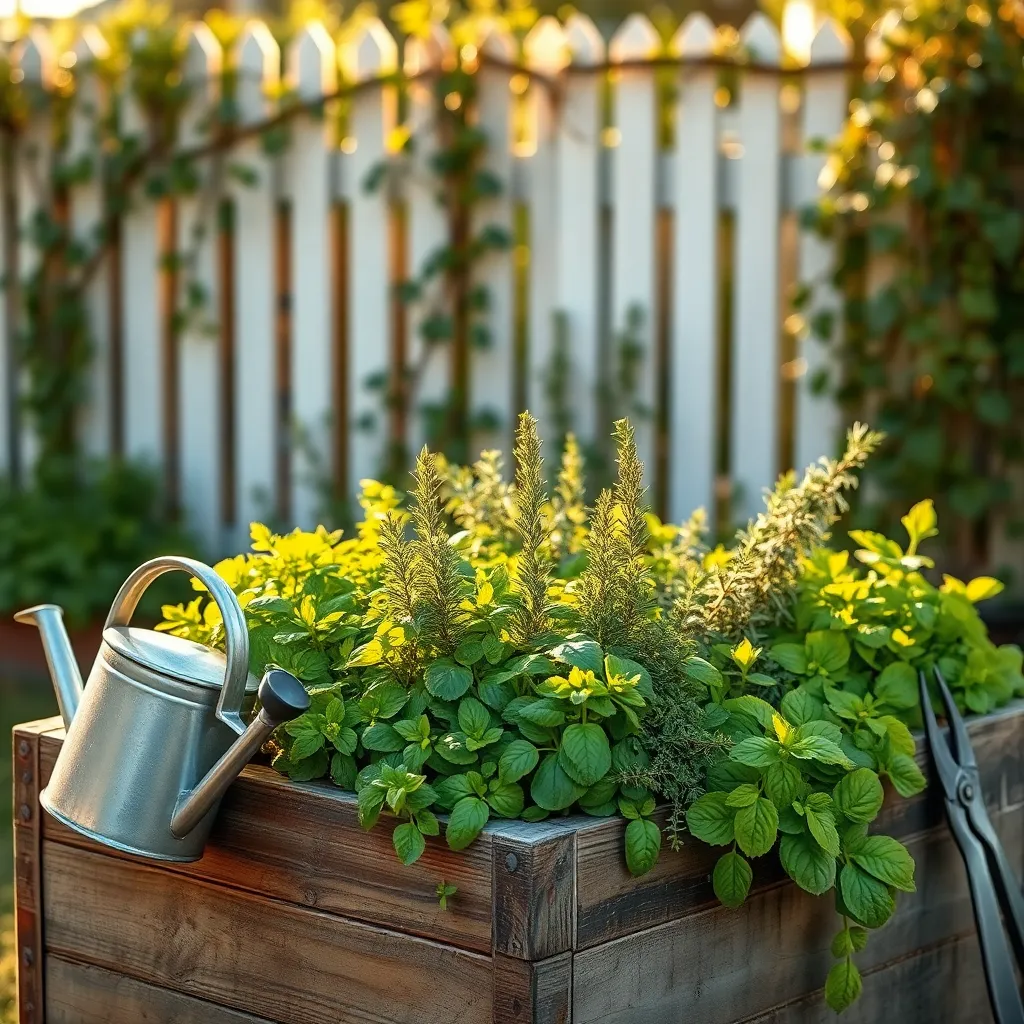
When selecting a spot for your herb garden, look for an area that receives at least six to eight hours of sunlight daily. Herbs like basil, rosemary, and thyme thrive in sunny conditions, which help them develop strong flavors and aromas.
It’s essential to ensure that the chosen location has well-draining soil to prevent waterlogging, which can damage roots. If your garden’s native soil isn’t suitable, consider using raised beds or containers filled with a mix of potting soil and compost to improve drainage.
For those with limited garden space, consider placing your herb garden near a south-facing wall or patio where sunlight is most abundant. This setup not only maximizes sunlight exposure but also offers the added warmth from the wall, which can extend your growing season.
Advanced gardeners might experiment with companion planting to maximize the use of sunlight and space. Plant sun-loving herbs alongside taller plants that can provide partial shade during the hottest parts of the day, ensuring a balanced environment for all your garden’s inhabitants.
Prepare the Soil Bed
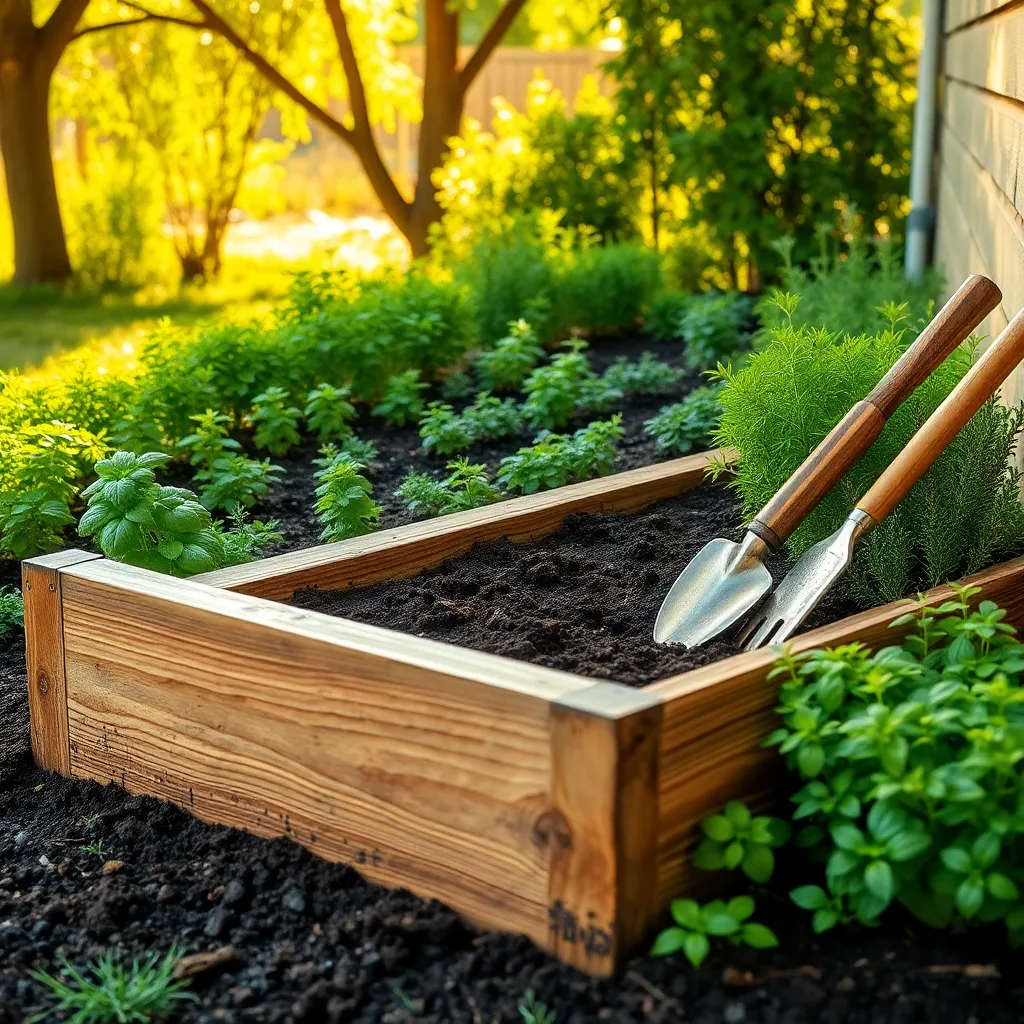
Once you’ve selected a sunny location, the next step is to prepare the soil bed for your herb garden. Begin by clearing the area of any weeds, rocks, or debris to ensure a clean planting surface. Weeds compete for nutrients, so removing them is crucial for healthy herb growth.
After clearing the site, loosen the soil to a depth of at least 12 inches using a garden fork or tiller. This depth allows roots to penetrate easily and improves drainage, which is essential for most herbs. Good drainage prevents root rot, a common issue in herb gardening.
Test your soil’s pH and nutrient levels to determine if amendments are needed. Most herbs prefer a slightly acidic to neutral pH range of 6.0 to 7.0.
- If the pH is too low, consider adding lime to raise it.
- If too high, sulfur can help lower it.
Adjusting the pH ensures optimal nutrient availability.
Incorporate organic matter such as compost or well-rotted manure into the soil to enhance its fertility and structure. Aim to mix in about 2 to 3 inches of organic material into the top 6 inches of soil. This addition not only provides essential nutrients but also improves soil aeration and moisture retention, which are crucial for vigorous herb growth.
Choose Suitable Herb Varieties
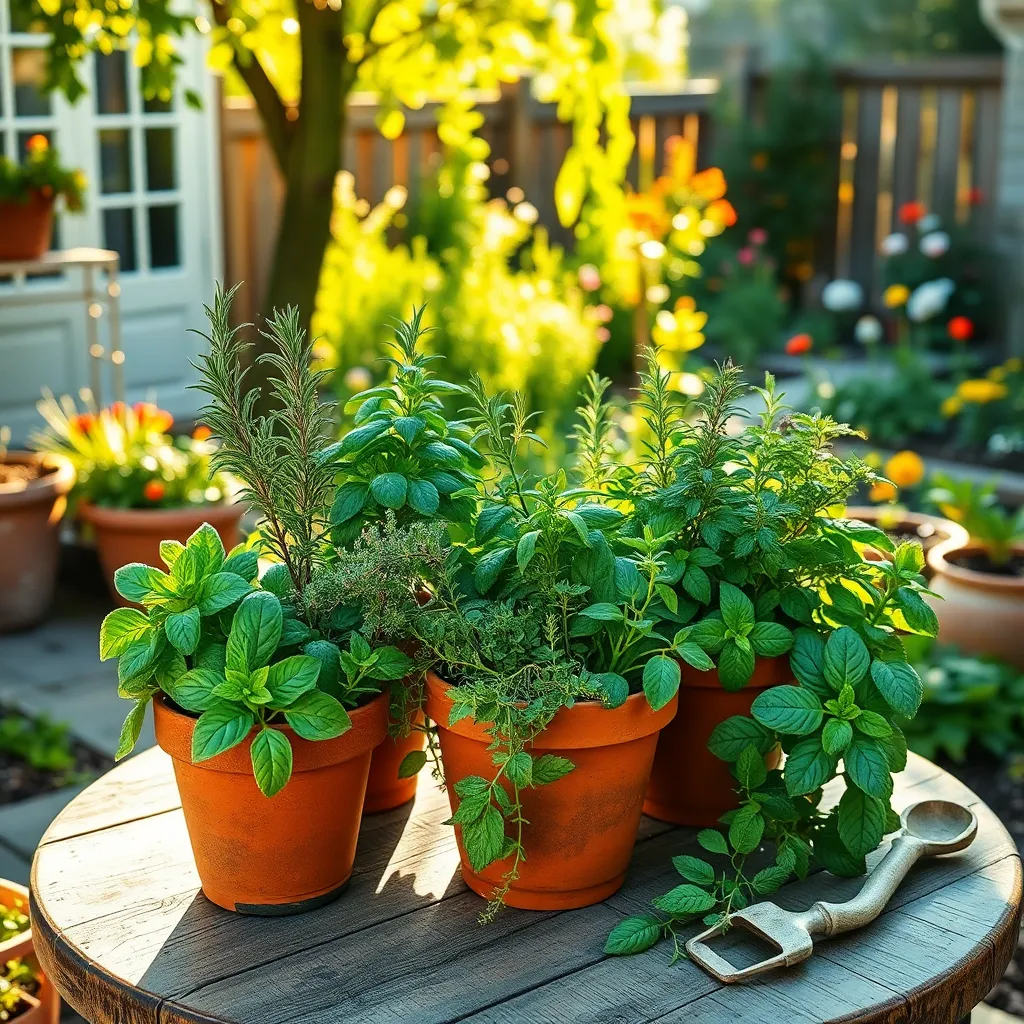
Choosing the right herb varieties is crucial for a thriving herb garden. Consider your local climate and the available sunlight in your garden space when selecting herbs.
For beginners, it’s wise to start with hardy herbs that are easy to grow. Varieties such as basil, parsley, and mint are excellent choices because they are relatively low-maintenance.
Ensure each herb’s specific needs are met for optimal growth. For example, basil thrives in warm weather with plenty of sunlight, while mint prefers a more shaded, cooler environment.
Advanced gardeners may explore more delicate herbs like cilantro and dill. These herbs require more attention, such as regular watering and protection from extreme temperature changes.
When deciding on soil, most herbs prefer well-drained soil with a neutral pH. Adding organic matter like compost can enrich the soil, promoting healthier herb growth.
Watering frequency varies by herb, but a general rule is to keep the soil consistently moist but not waterlogged. A good practice is to water early in the morning to allow the foliage to dry throughout the day, reducing the risk of fungal diseases.
Plant Herbs with Care
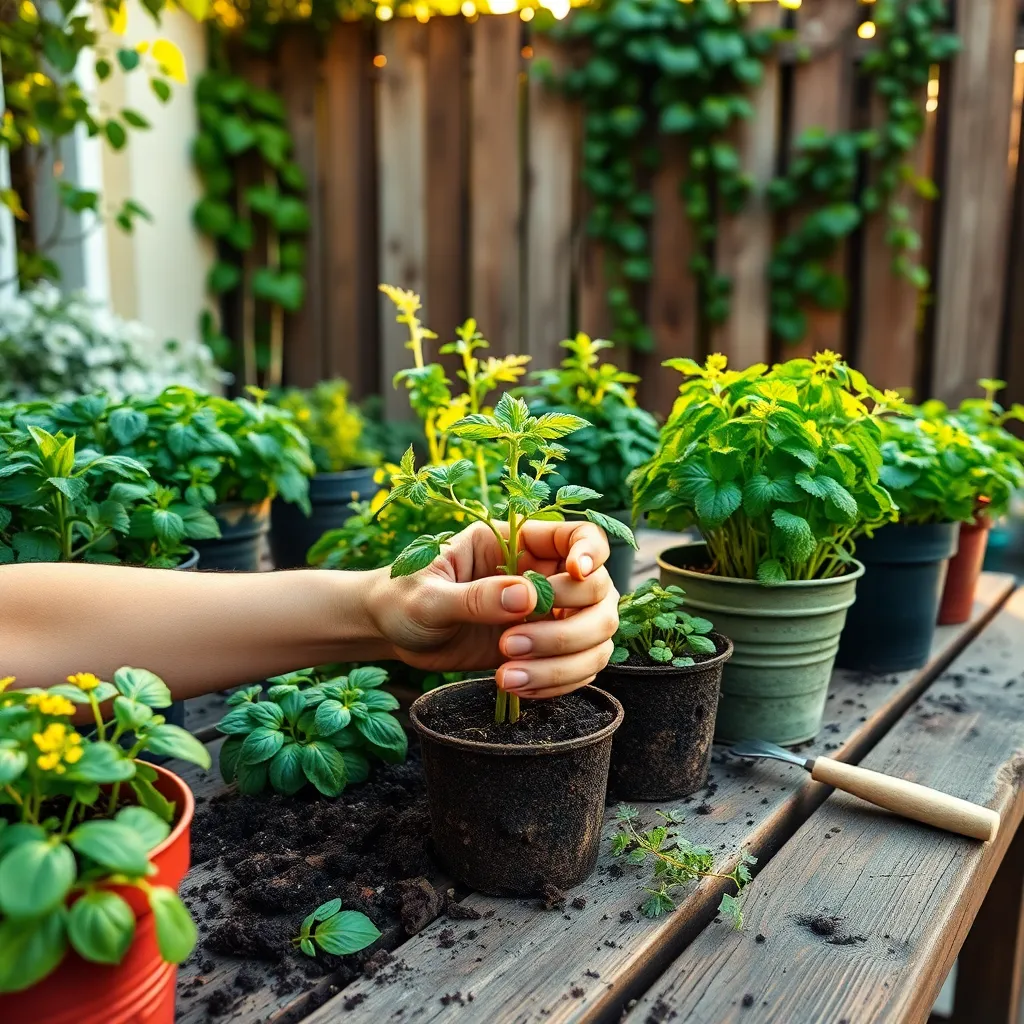
When planting herbs, it’s essential to consider their specific needs to ensure they thrive. Most herbs prefer a sunny location, so choose a spot that receives at least six hours of direct sunlight each day.
Before planting, prepare the soil by mixing in organic matter such as compost. Herbs thrive in well-draining soil, which prevents root rot and other moisture-related issues.
It’s important to space your herbs properly to allow for adequate air circulation. Crowded plants can lead to mold and mildew, so follow the spacing recommendations specific to each herb variety.
Watering herbs requires a balanced approach; they need consistent moisture without being waterlogged. A general guideline is to water when the top inch of soil feels dry, but be sure to adjust based on your climate and soil type.
For those interested in advanced techniques, consider using mulch around your herbs to retain moisture and suppress weeds. Mulching can also help regulate soil temperature, creating a more stable environment for your plants.
Lastly, regularly harvest your herbs to encourage fresh growth and prevent them from becoming leggy. Pinch back the tips regularly to keep your plants bushy and productive throughout the growing season.
Water and Maintain Regularly

Once your herbs are planted, maintaining consistent watering is crucial for their growth. Most herbs prefer soil that is consistently moist but not waterlogged, so consider using a soil mix that offers good drainage, such as a sandy loam.
To determine when to water, insert your finger about an inch into the soil; if it feels dry, it’s time to water. Using a watering can with a narrow spout will help you direct water precisely at the base of the plants, avoiding wetting the foliage, which can lead to disease.
For those with busy schedules, installing a simple drip irrigation system can ensure your herbs get the moisture they need without daily attention. These systems are especially beneficial in hot climates or during long dry spells, providing consistent hydration while conserving water.
While watering is key, regular maintenance also involves checking for pests and diseases. Keep an eye out for common herb garden pests like aphids or whiteflies, and remove any damaged leaves to prevent the spread of disease.
Mulching around your herbs can help retain soil moisture and reduce weed growth, making care more manageable. Choose organic mulches such as straw or shredded bark, which will gradually enrich the soil as they decompose.
Lastly, remember that herbs benefit from occasional feeding to stay healthy and productive. An all-purpose liquid fertilizer applied monthly can provide the nutrients your herbs need to thrive, ensuring a bountiful harvest throughout the growing season.
Conclusion: Growing Success with These Plants
Building a simple herb garden is more than just cultivating plants; it’s about nurturing the relationships in your life with care and intention. The five key concepts we’ve explored—communication as the foundation, shared goals for growth, patience in the process, celebrating small successes, and mutual support—are vital not only to your garden but also to thriving relationships. Just as herbs need time and the right conditions to flourish, so do connections with the people around you.
To put these concepts into action, start small: choose one herb to plant together with someone special and discuss your hopes for its growth as a metaphor for your relationship. This tangible step can spark meaningful conversations and strengthen your bond.
Remember to bookmark this article as a resource to revisit these valuable insights and techniques. As you continue nurturing your garden and relationships, know that success lies in consistent effort and shared experiences. Embrace this journey with optimism, knowing that each step you take brings you closer to a flourishing, fulfilling connection. Here’s to sowing the seeds of love and reaping the rewards of a rich, harmonious life together.

